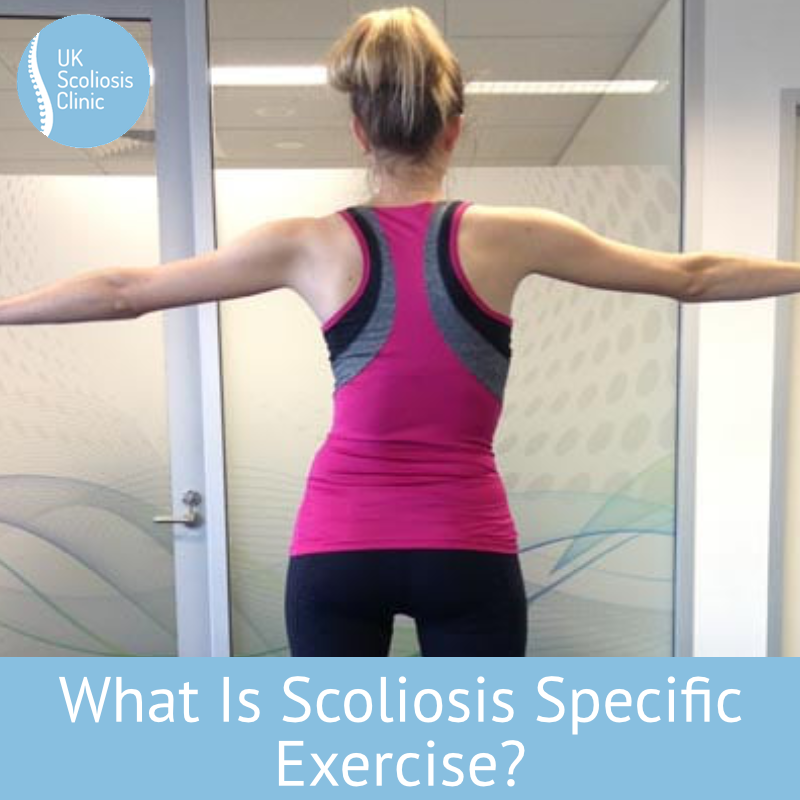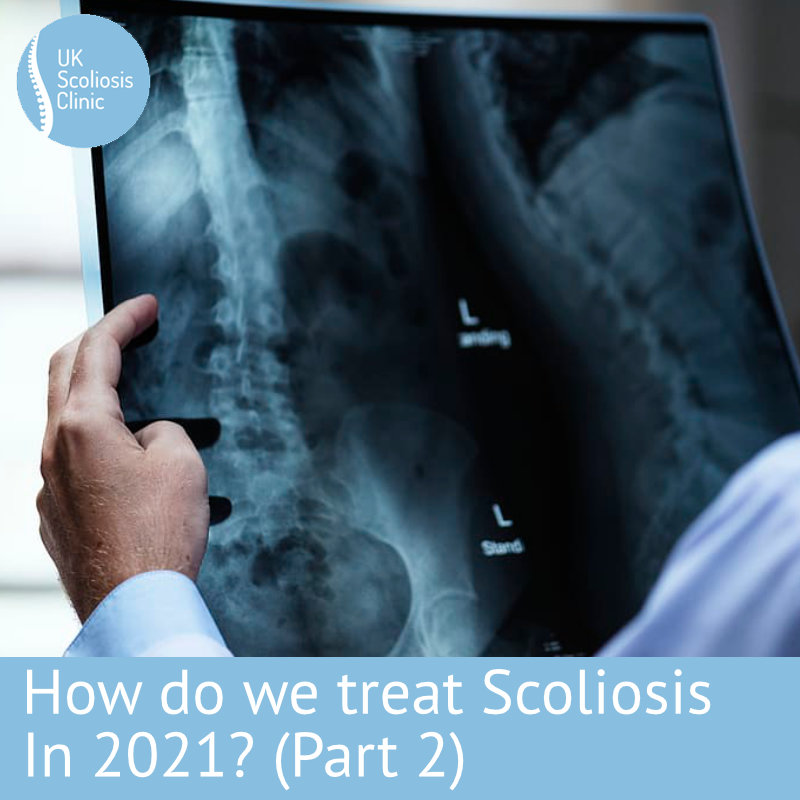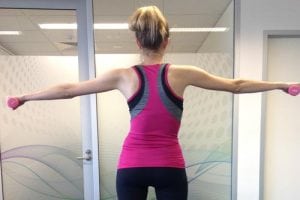While many of the patients we see at our clinic are children with juvenile or adolescent scoliosis, adult scoliosis cases also represent a significant percentage of those we help. There are many approaches which can be used in tackling adult scoliosis, but one of the most commonly chosen is scoliosis specific exercise. It was once thought that surgery was the only effective treatment for adult scoliosis, but today research is confirming that high quality, individualised treatment programs can be effective in stopping the progression of scoliosis in adults.
Adult scoliosis – an important field of research
While scoliosis clinicians often tend to focus on scoliosis in adolescents, it has long been known that idiopathic scoliosis can (and often does) continue to progress during adulthood after skeletal maturity[1], when growth has stopped.
While the development of scoliosis in adults is slower, over time the curve does worsen which can lead to a reduction in functional capacity and the development or the worsening of spinal pain and associated radicular symptoms[2](pain which radiates from the root of a nerve at the spinal column into the arms or legs), as well as spinal degenerative changes. This means that research into the best ways to tackle adult scoliosis is equally important as in adolescent scoliosis.
In fact, more than 60 % of cases of adult scoliosis progress, particularly in the case of curves exceeding 30 ° Cobb at skeletal maturity, regardless of the curve pattern[3]. Unlike adolescent scoliosis however, Marty-Poumarat[4] has shown that the rate of progression in adult scoliosis is linear (regular and constant) and can therefore be used to establish an individual prognosis. This rate of progression, if left untreated is deemed to be around 0.5-1 °per year[5].
While the prevailing view for some time has been that adult idiopathic scoliosis was only suitable for treatment with surgery when the curve becomes significant enough – more recent research clearly suggests that non-surgical approaches can be effective in reducing curve magnitude and halting progression, potentially eliminating the need for surgery in many cases.
In a short-term case series Weiss et al. showed 43.93 % of 107 patients improved 5 or more Cobb degrees immediately after 4 – 6 weeks of in-patient scoliosis specific exercise program[6], while Morningstar et al. showed that 19 patients treated with spinal manipulation and various physiotherapeutic procedures reported immediately after the therapy an average correction of 17 ° Cobb [7][8]. In an earlier case report, Negrini et al. showed a 18.5 Cobb degrees reduction after one year of Scoliosis Specific SEAS exercises[9].
Treating adult scoliosis with scoliosis specific exercise – new research
Now, a larger study by Negrini et al. has now gone further in establishing the effectiveness of SEAS exercises in reducing the progression of scoliotic curves. SEAS exercises (one of the types we utilise in our own clinic) are scoliosis-specific exercises. In adult patients they are aimed to recover postural collapse, postural control and vertebral stability through the process known as active self-correction. Typically, therapy includes at least two weekly exercise sessions each lasting 45 min – but exercise prescription varies significantly in both length and frequency, since to be effective an exercise program must be individually tailored.
The study considered adults (18 years or more) who exhibited curves larger than 30° and documented curve progression during adulthood (at least 6° Cobb) or adults with curves larger than 40° who had refused surgical treatment. Patients were prescribed Scoliosis Specific SEAS Exercises exclusively and were required to practice their exercises regularly for at least ten months per year. Patients were assessed a minimum of 1 year after their first assessment, via x-rays which were independently verified.
Results
The results from the study were highly encouraging – it confirmed that that Scoliosis Specific Exercises can be effective to obtain stability and, in some cases, to reduce the Cobb angles by degrees. In highly progressive curves, exercises appear to slow down the progression of the curvature (worsening). Of the 34 patients included in the study, an average reduction of 4.1 degrees cobb was achieved after one year. [10]
More broadly, the study also went to confirm the fact that scoliosis specific exercise programs need to be maintained and monitored, and that the patient must continue to adhere to the exercise program in the long term in order to see sustained improvement.[11]
While the authors of the study were pleased with the outcome, it’s fair to say that more research on scoliosis specific exercise is required and will continue to be published over the coming months and years. Future larger, long term, observational studies will provide us with more insight on defining the best Scoliosis Specific Exercises management approach and explore other very important issues associated with adult progressive spinal deformities, such as, sagittal global balance, back pain, disability and quality of life.
Treatment for adult scoliosis at the UK Scoliosis Clinic
At the UK Scoliosis clinic, we utilise a variety of approaches as part of our scoliosis specific exercise program. This allows us to tailor our approach to our patient’s specific needs – this might include exercise programs based on the SEAS or Schroth methodologies as well as bracing if required. It’s because our scoliosis specialists have such a wide variety of tools at their disposal that we’re able to achieve targeted, measured and provable results for our patients.
[1] Collis DK, Ponseti IV. Long-term follow-up of patients with idiopathic scoliosis not treated surgically. J Bone Joint Surg Am. 1969;51(3):425 – 45
[2] Guigui P, Rillardon L. Adult spinal deformities. Rev Prat. 2006;56(7):701– 8
[3] Weinstein SL, Dolan LA, Spratt KF, Peterson KK, Spoonamore MJ, Ponseti IV. Health and function of patients with untreated idiopathic scoliosis: a 50-year natural history study. JAMA, J Am Med Assoc. 2003;289(5):559 – 67, Weinstein SL. Natural history. Spine. 1999;24(24):2592–600
[4] Marty-Poumarat C, Scattin L, Marpeau M, Garreau De Loubresse C, Aegerter P. Natural history of progressive adult scoliosis. Spine. 2007;32(11):1227 – 34, discussion 1235.
[5] Ibid.
[6]Weiss HR. Influence of an in-patient exercise program on scoliotic curve. Ital J Orthop Traumatol. 1992;18(3):395 – 406
[7] Morningstar MW, Woggon D, Lawrence G. Scoliosis treatment using a combination of manipulative and rehabilitative therapy: a retrospective case series. BMC Musculoskelet Disord. 2004;5:32.
[8] We wish to note that in this instance, the term ‘immediately’ should be taken literally – more research is needed to establish the long term prognosis offered by CLEAR and associated approaches.
[9] Negrini A, Parzini S, Negrini MG, Romano M, Atanasio S, Zaina F, et al. Adult scoliosis can be reduced through specific SEAS exercises: a case report. Scoliosis. 2008;3:20
[10] Negarini et al. Scoliosis-Specific exercises can reduce the progression of severe curves in adult idiopathic scoliosis: a long-term cohort study. Scoliosis (2015) 10:20
[11] Ibid.





